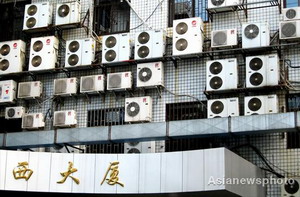Banks start mopping up more liquidity
Updated: 2011-09-06 09:21
(Xinhua)
|
|||||||||||
BEIJING - China's commercial banks will put a total of 900 billion yuan ($140.79 billion) in reserve over the next six months starting?Sept 5?as the government takes a new approach to mopping up market liquidity.
The People's Bank of China (PBOC), or the country's central bank, last week ordered banks to include margin deposits in their reserves starting Sept 5.
The margin deposit is the collateral deposited by customers for letters of credit and other guarantees.
"The new policy indicates that inflationary pressures are still high in the country despite expectations that consumer prices should start to decline in August from July's peak," Wang Haifeng, analyst of research institutes with the National Development and Reform Commission.
The country's consumer price index (CPI), a main gauge of inflation, soared to a 37-month high of 6.5 percent in July, but August's CPI is expected to be no higher than 6 percent.
The government introduced the new credit-control measure because if it continued to use the traditional tools they would yield "little, or even negative effects," said Huo Deming, professor of the China Center for Economic Research at Peking University.
Li Xunlei, chief economist of Guotai Junan Securities, said the expansion of the base used to calculate banks' required reserves was the best option for the central bank to drain liquidity from the market given the current circumstances.
"Previously, many commercial banks were eager to grow their off-balance-sheet business such as bill financing in order to turn in less deposits as required reserves," Li said.
And it was difficult for the central bank to use traditional monetary policy tools to regulate such off-balance-sheet businesses prior to the new rules, Li noted.
He said the amount of margin deposits banks keep as required reserves every month would be lower than the monthly growth of funds outstanding for foreign exchange.
As the funds outstanding for foreign exchange had dropped, Li said, the new required reserve rules had made it unnecessary for the PBOC to raise the RRR again and the likelihood of an interest rate hike also had dropped.
Liu Yuhui, a researcher with the Institute of Finance and Banking of the Chinese Academy of Social Sciences, said the new rules would hit medium and small banks harder than their mammoth rivals as the scale of their margin deposits was much greater.
According to the Chinese banks' half-year reports, the proportion of margin deposits in total deposits held by medium and small banks was about three to four times the amount of large banks.
PBOC data shows the banking system's margin deposits totaled 4.42 trillion yuan by the end of July, with margin deposits for medium and small banks at 2.8 trillion yuan.
Margin deposits accounted for over 20 percent of medium and small banks' total deposits.
Ba Shusong, a researcher with the Development Research Center of the State Council, or Cabinet, said the new move was equivalent to increasing the traditional RRR by several basis points.
The central bank has given the Postal Saving Bank of China and the country's five largest banks -- ICBC, the Agricultural Bank of China, BOC, CCB and Bankcomm -- three months to meet the required reserve target while smaller banks were given six months.
The country's RRR currently stands at 21.5 percent for large commercial banks after six hikes this year, meaning that they have to set aside 21.5 percent of their deposits in reserve.
Related Stories
Fitch Ratings warns Chinese banks 2011-08-31 14:00
Banks' stocks tank on A-share market 2011-08-30 09:06
China's top five banks' total assets down 2011-08-26 09:01
PBOC injects liquidity into banks for 6th straight week 2011-08-25 16:58
- Rare earth mines in E China to halt output
- August CPI likely to show slower rate of inflation
- New credit agency to challenge 'big three'
- Banks start mopping up more liquidity
- Pilot cities to test vehicle power pricing
- Executives enjoy salary bonanza
- Charity accused over land deal, loans
- Anti-monopoly watchdog gives Nestle nod













